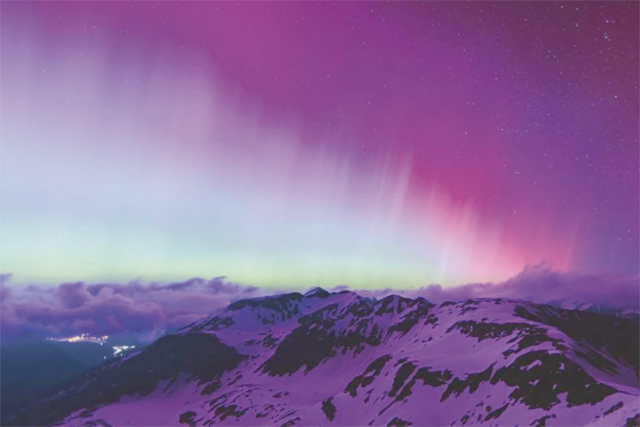You are here
Destructive solar blasts narrowly missed Earth in 2012 — scientists
By Reuters - Mar 24,2014 - Last updated at Mar 24,2014
CALIFORNIA – Fierce solar blasts that could have badly damaged electrical grids and disabled satellites in space narrowly missed Earth in 2012, US researchers said on Wednesday.
The bursts would have wreaked havoc on the Earth’s magnetic field, matching the severity of the 1859 Carrington event, the largest solar magnetic storm ever reported on the planet. That blast knocked out the telegraph system across the United States, according to University of California, Berkeley research physicist Janet Luhmann.
“Had it hit Earth, it probably would have been like the big one in 1859, but the effect today, with our modern technologies, would have been tremendous,” Luhmann said in a statement.
A 2013 study estimated that a solar storm like the Carrington Event could take a $2.6 trillion bite out of the current global economy.
Massive bursts of solar wind and magnetic fields, shot into space on July 23, 2012, would have been aimed directly at Earth if they had happened nine days earlier, Luhmann said.
The bursts from the sun, called coronal mass ejections, carried southward magnetic fields and would have clashed with Earth’s northward field, causing a shift in electrical currents that could have caused electrical transformers to burst into flames, Luhmann said. The fields also would have interfered with global positioning system satellites.
The event, detected by NASA’s STEREO A spacecraft, is the focus of a paper that was released in the journal Nature Communications on Tuesday by Luhmann, China’s State Key Laboratory of Space Weather professor Ying Liu and their colleagues.
Although coronal mass injections can happen several times a day during the sun’s most active 11-year cycle, the blasts are usually small or weak compared to the 2012 and 1859 events, she said.
Luhmann said that by studying images captured by the sun-observing spacecraft, scientists can better understand coronal mass injections and predict solar magnetic storms in the future.
“We have the opportunity to really look closely at one of these events in all of its glory and look at why in this instance was so extreme,” Luhmann said.
Related Articles
WASHINGTON — The most powerful solar storm in more than two decades struck Earth on Friday, triggering spectacular celestial light shows in
SRIHARIKOTA, India — The latest mission in India’s ambitious space programme blasted off Saturday on a voyage towards the centre of the sola
PARIS — Massive explosions on the Sun have triggered warnings of geomagnetic storms that could create dazzling auroras in the northern Unite












